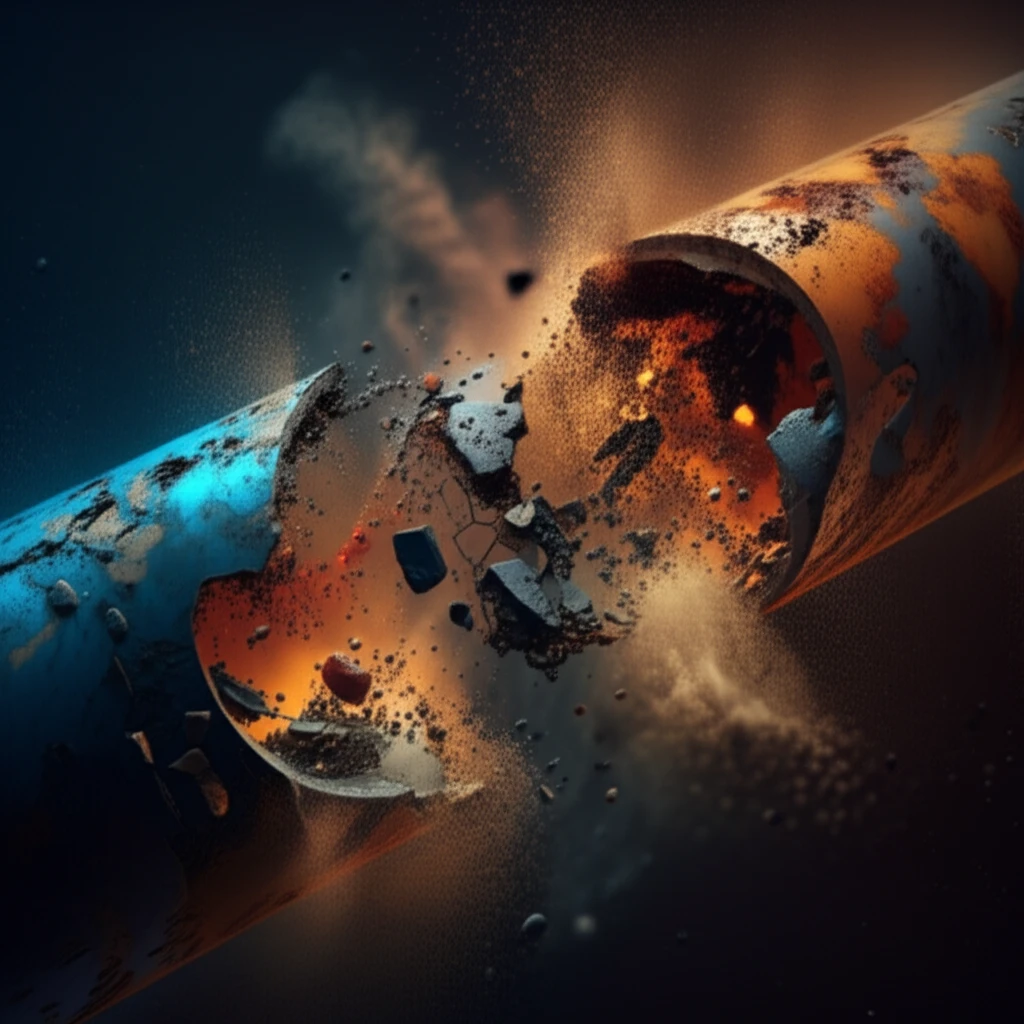
Is Your Pipeline at Risk? Unveiling the Silent Killer of Industrial Steel
"Discover how erosion-corrosion synergistically attacks steel in multiphase flows, and what you can do to protect your infrastructure."
Erosion-corrosion: it sounds like something out of a science fiction movie, but it's a very real and costly problem in many industries, particularly those dealing with the transport of fluids containing solid particles. Imagine sandblasting, but instead of just removing paint, it's actively weakening the metal underneath, all while being sped up by corrosive chemicals in the fluid itself. This dual attack is what makes erosion-corrosion so insidious.
The oil and gas industry is particularly vulnerable. Production fluids often contain sand, which, when combined with corrosive solutions, creates the perfect storm for erosion-corrosion. The consequences can be dire, ranging from unexpected pipeline shutdowns to significant financial losses. Understanding how this process works is the first step in combating it.
Researchers have been working hard to understand the intricacies of erosion-corrosion and develop effective mitigation strategies. A recent study focused on the behavior of AISI 4330 steel, a common alloy used in pipelines, when exposed to saline-sand multiphase flow. By using electrochemical and gravimetric techniques, scientists have gained valuable insights into the factors that influence the rate of erosion-corrosion and potential ways to protect steel infrastructure.
The Mechanics of Erosion-Corrosion: How Does It Work?

At its core, erosion-corrosion is a combination of mechanical wear and electrochemical dissolution. Think of it like this: abrasive particles in a fluid strike the metal surface, physically wearing it away. Simultaneously, the corrosive elements in the fluid chemically react with the exposed metal, dissolving it. The synergy arises because the mechanical wear removes protective layers (like oxide films), making the metal more susceptible to corrosion, while the corrosion weakens the surface, making it easier for particles to erode it.
- Fluid Flow Velocity: Higher velocities mean more frequent and forceful impacts from particles.
- Particle Size and Concentration: Larger and more numerous particles lead to greater wear.
- Corrosive Environment: The pH and chemical composition of the fluid determine the rate of electrochemical dissolution.
- Material Properties: The hardness and corrosion resistance of the metal itself play a significant role.
Protecting Our Infrastructure: What Can Be Done?
Erosion-corrosion is a complex problem, but it's not insurmountable. Strategies for mitigation include: material selection (using more corrosion-resistant alloys), applying protective coatings, optimizing fluid flow to reduce particle impingement, and controlling the chemical composition of the fluid to minimize corrosion. Regular inspection and monitoring are also crucial for detecting and addressing erosion-corrosion before it leads to catastrophic failures. By understanding the science behind this phenomenon and implementing proactive measures, industries can safeguard their infrastructure and prevent costly disruptions.
